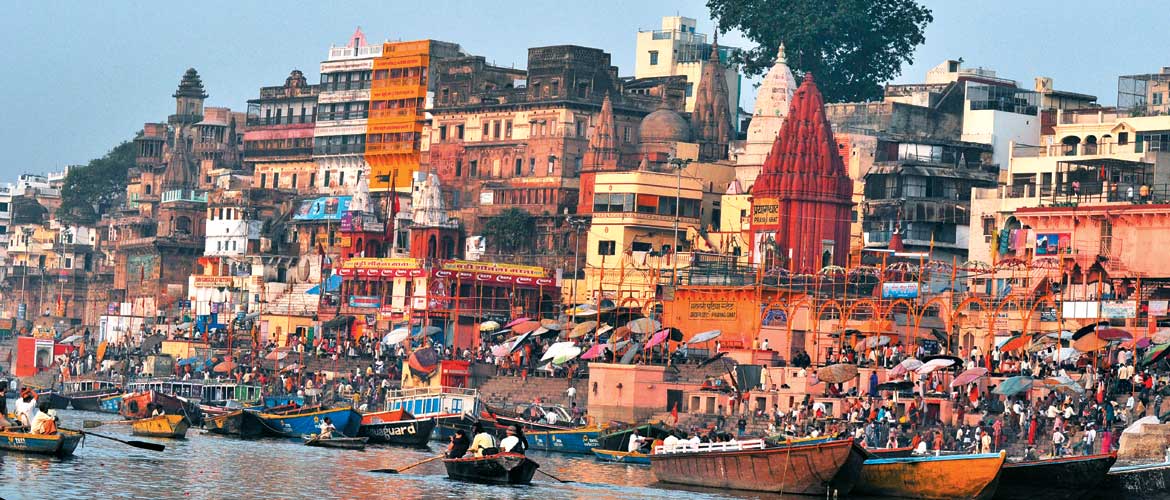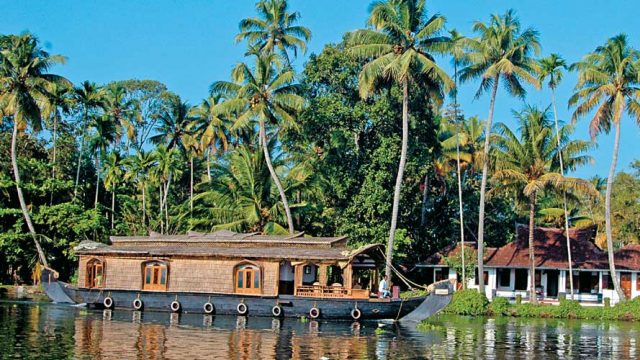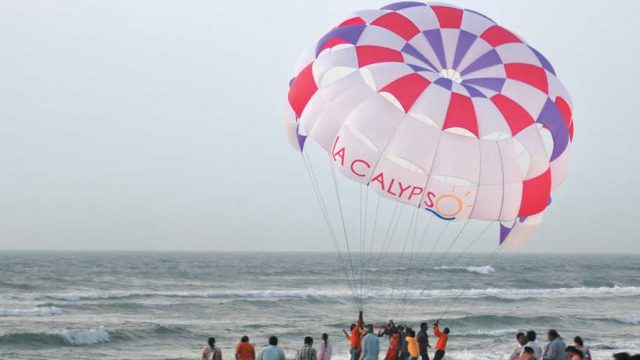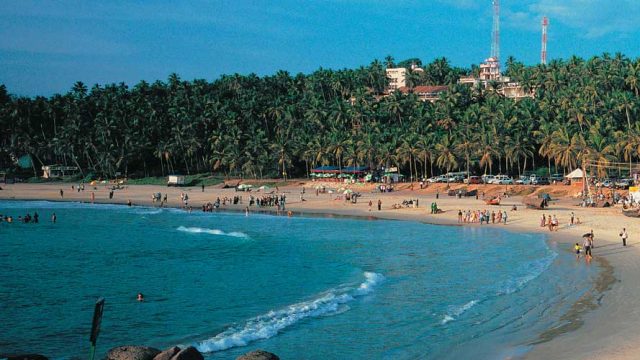We go to Varanasi in our search for Kashi: the mythical kingdom that’s been around
THINGS TO SEE AND DO
It is said that ‘modern’ Varanasi was made by the Marathas in the 18th century. This is true to an extent. The Peshwas of Poona, Holkars of Indore, Scindias of Gwalior, newly ascendant powers after the weakening of the Mughals, did build temples and ghats thick and fast, as if to make up for their upstart status by acts of piety traditionally associated with kings. But there were also the kings of Varanasi themselves, revered today as avatars of Shiva, but with a lineage going back to a zamindar of the 18th century. Other local kingdoms, having gained some autonomy with the waning of the Mughals, also show up as patrons. Attracted by the city’s sacred aura and secular vitality, palaces and temples were built by rulers from Jaipur, Rewa (MP), Darbhanga (Bihar) and Bengal. The rulers came and the ‘commoners’ followed, such that some of the typical examples of Bengali havelis or crispest Kannadiga dosas can be seen in the dark, narrow, yet magical galis of Varanasi. For navigating these galis, it’s best to rely on your feet. If you tire, take a cycle rickshaw but leave your car for attractions lying on the outskirts.

A River…
There is no sight as uniquely spectacular as the sunrise-bathed ghats of Varanasi seen from a boat on the Ganga at dawn and I have the authority of many time-honoured travellers in claiming this. Mark Twain, who came here in 1826, called the riverfront “the supreme showplace of Banaras… a splendid jumble of massive and picturesque masonry… movement, motion, human life everywhere”. Many others have agreed. So here’s the thing to do. Wake up as early as you can; pre-sunrise is good because you can then catch the painting-like shadows of early bathers and boatmen readying for their early day. There is nothing but vast stretches of fine sand on the eastern bank of the Ganga, opposite the ghats, so you can see the day breaking over the horizon and into the river. Sit on a boat with the lilt of a boatman’s accent and his splashing oars for company and watch the ghats glow. There’s always a breeze, always a bowl of leaves with marigolds, often some pigeons on floating logs.
After a glorious hour or two, ask to be dropped at the Dashashvamedha Ghat, make your way to Vishvanath Gali, and have a piping hot breakfast of alu-kachori and jalebi.
…and some 80 ghats
The ghats – literally flights of steps but more like theatres of life – stretch continually for some 3km along the riverfront. They are the beating heart of Varanasi; you can stroll down the entire stretch over a day and never be bored. Depending on the time, the season, or the Hindu calendar, they change character seemingly of their own accord. Walk down a stretch in the morning and the whiplash sound of dhobis washing clothes echoes on wet mud. Walk back after a while and the dhobis have disappeared leaving behind vast arrays of prismatic clothes, which you have to step around.

The same ghat could see the immersion of a Durga idol at puja time, early morning rituals at Kartik Poornima, very different rites of shraddha at Pitrapaksha. But there always are children flying kites, wandering goats and foreigners with cameras.
Towards the northern end lies Raj Ghat, the site of ancient Varanasi. If you get off from your vehicle, just before the Malviya Bridge before Rajghat, you stand at a very interesting point. Ahead of you will be the huge 20th-century bridge. On your left, the pretty Lal Khan ka Rauza, tomb of a Mughal noble, made in 1773. A path to your left would lead to the Adi Keshava, the primordial Vishnu temple, physically 200 years old but with a tradition stretching back to the Puranas.
Going south from Rajghat, you can take a boat till the Panchganga Ghat. The crowning monument here is the simple Dharahara Mosque made by Aurangzeb, on a 17th-century Bindu Madhav Temple. The Maharaja of Satara built the current Bindu Madhav Temple in the mid-18th century. Further south, you come across the Balaji Ghat (Bajirao Peshwa; mid- 18th century), Gwalior Ghat (Jiyaji Rao Shinde; mid-19th century); Gangamahal Ghat (Jiyaji Rao Scindia; 1864).
Scindia Ghat, built by Baijabai Scindia and foregrounded by a sunk temple, is immediately recognisable. Built in 1835, it had sunk soon after, but was rebuilt in 1937. Adjacent lies the Manikarnika Ghat, a very old and hallowed site: mani (‘gem’) karnika (of the ‘ear’), for Parvati’s earring had fallen in the pool here. The tradition of Hindu cremations here is relatively recent, dating perhaps to the 18th century; the ghat was made pucca in 1730. Definitely climb up the Nepal raja’s Lalita Ghat to see a unique sight in Banaras – a quaint, pagoda-like wooden Temple of Pashupatinath, with brackets and erotic carvings dating from 1843 preserved in it. And do climb the Manmandir Ghat, a personal favourite for its beautiful Rajasthani-style, jharokha-laden palace and observatory. The palace was begun by Raja Man Singh, then ruling from Amer, in 1600, while his descendant Jai Singh built the stone observatory in the 18th century.
Palace observatory entry Indians ₹15; Foreigners ₹200 Timings Sunrise– sunset
A little ahead, the Dasashvamedha Ghat is the most ‘happening’ ghat in Banaras. Here, you can find yourself a corner and gaze all day at various scenes that will unfold before you all day. In the evening, an aarti to the Ganga is organised here, a much grander and spectacular – purists say ‘touristy’ – version of the simpler, more intimate local ritual followed on other ghats.
Tulsi Ghat is renowned for being the place where Tulsidas wrote his Ramcharitamanas and where he died in 1623. It’s a peaceful, clean ghat, on climbing atop which you can visit the site of Tulsi’s home and temple, where his padukas (wooden slippers) are still kept.
Ramnagar Fort and Museum
This early 18th-century fort on the east bank is best appreciated from a boat, as it stands directly on the river. To enter it, you’ve to disembark from your boat; you can also reach by auto. It’s a stately but fading structure, in a part of which the royal family stays. The museum is a dusty collection of grand palanquins and howdahs, pistols, rifles, swords and brocades from the royal collection.
Museum entry Indians ₹50; Foreigners ₹150 Timings 10.00am–5.00pm Cell 09415818781
WHERE TO STAY
It is pointless to go to Banaras and stay away from the ghats. The one-of-a-kind Ganges View (Tel: 0542-3090289; Tariff: ₹4,000–6,000) is at Assi Ghat, tastefully run by Shashank Singh, whose family collection of palanquin sketches decorate the walls. The terrace is a reclusive writer’s heaven.
The nearby Palace on Ganges (Tel: 2315050; Tariff: ₹6,000–9,000) is more of a ‘hotel’, appointed on the lines of different regional styles of India. Assi also gives the cheaper but comfortable option of Sahi Riverview Guest House (Tel: 2366730; Tariff: ₹650–2,000).
Away from the ghats, you have the The Taj Gateway Hotel (Tel: 6660001; Tariff: ₹15,500–23,500), set amidst 12 acres of lush greenery. Clarks Varanasi (Tel: 2501011-20; Tariff: ₹8,500–15,000), a heritage hotel, has a multi-cuisine restaurant and swimming pool.
WHERE TO EAT
Deena Chaat, near Chowk, dishes up excellent tikki, sweet gol-gappas and paalak-papdi-chaat. Try the old-style Marwari thali at the Jaipuria Bhavan at Gaudulia. For Continental, there’s the pleasant Pizzeria Vatica Cafe at Assi Ghat. Phulwari Restaurant (Godaulia) offers good Mediterranean dishes. Bread of Life Bakery, near Shivala Ghat, has great Continental fare.
Tip No alcohol or non-vegetarian allowed in the old city
FAST FACTS
When to go Varanasi’s weather is much like Delhi’s. The best time to go there is between October and March
Tourist offices
UP Tourism, Chaukaghat Varanasi, Tel: 0542-2505033,
UP Tourist Info Counter, Cantt, Railway Station, Varanasi, Tel: 2506670, W uptourism.gov.in
STD code 0542
GETTING THERE
Air Varanasi’s international airport at Babatpur (25km/ 30mins) is connected with Delhi, Mumbai, Chennai, Kolkata, Hyderabad, Kathmandu and Bangkok
Rail Varanasi is served by Varanasi Junction, Manduadih and Mughal Sarai stations. Express trains connect Varanasi to the major cities
Road Varanasi is on NH2 that links Kolkata (681km) to Delhi (805km) via Allahabad (125km) and Kanpur (316km). NH56 connects Varanasi to state capital Lucknow (300km) Bus State and private buses connect Varanasi to other cities
India
Unmissable India
Uttar Pradesh





